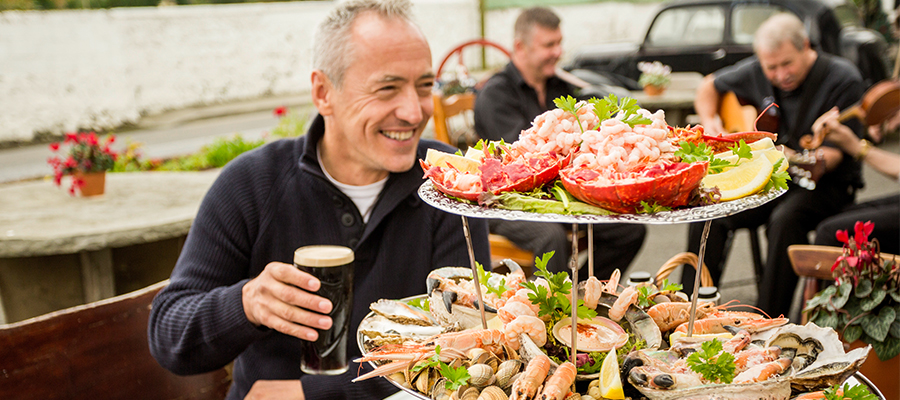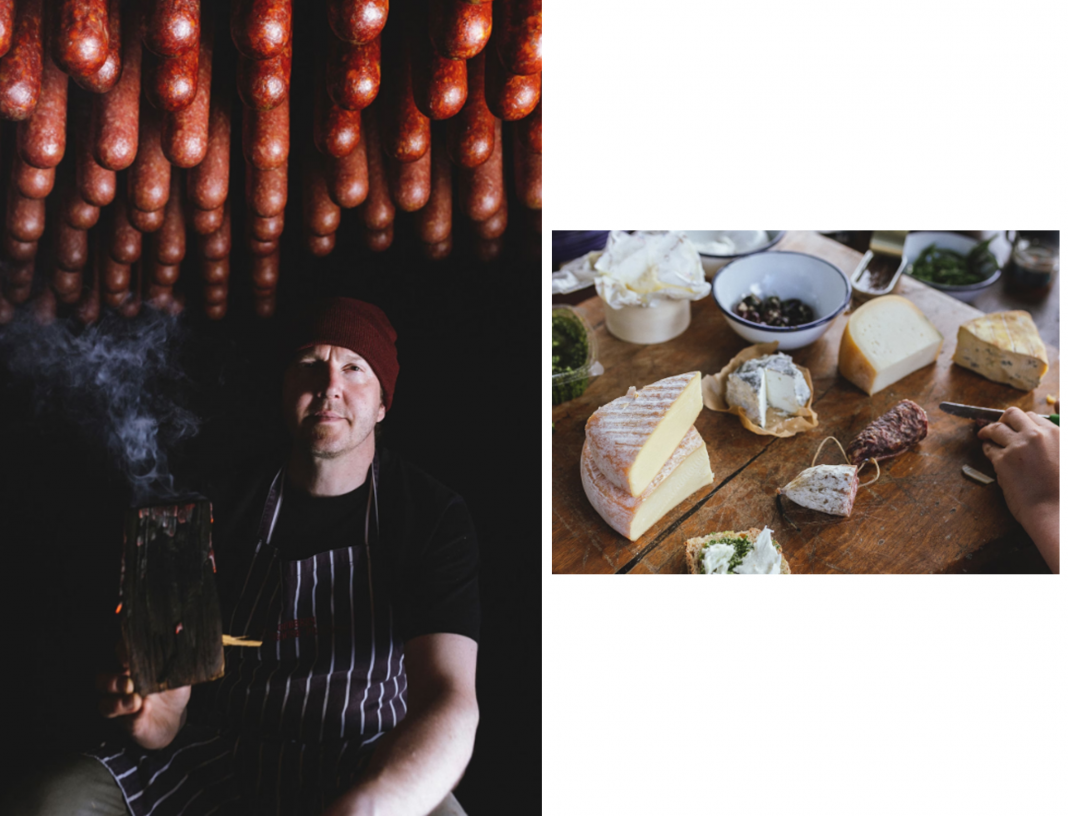Across the rolling hills and wild coastline of County Cork, a culinary revival is quietly unfolding. Once overlooked on Europe’s gourmet map, this southwestern corner of Ireland is now celebrated for its rich bounty and creative spirit. From foragers and farmers to world-class chefs, the people of County Cork are redefining Irish cuisine — blending deep-rooted traditions with innovative flavors and a fierce commitment to sustainability. Here, Ireland’s past and present come together on the plate in the most delicious ways.
A culinary history shaped by hardship and resilience

To truly appreciate County Cork’s modern food scene, it helps to understand the history that shaped it. “A country’s food history is intimately connected to its political history,” explains Kate McCabe, co-founder of Bog & Thunder, a tour company that connects travelers with Irish artisans and producers. For centuries, Ireland’s fertile lands produced butter, beef, and dairy — but under colonial rule, much of this bounty was exported to England while many Irish families faced hunger and dispossession.
Ireland’s culinary reinvention really began after the hardships of the 20th century. Post-war modernization, independence, and European Union investment helped transform the food landscape. Max Sussman, culinary director at Bog & Thunder, points out that the country’s population only recently recovered to pre-famine levels, and this demographic growth is fueling a young and vibrant food culture today.
Suzanne Burns, who leads Kinsale Food Tours, highlights the exciting fusion happening now: “Ireland’s food is a trifecta of really good traditional food that has embraced fusion food and wild food.” Foraging wild ingredients like seaweed, hawthorn, and dandelion is part of this new culinary language — one that is uniquely Irish but open to the world.
The rise of west cork’s artisan food movement

County Cork’s fertile soils and mild, oceanic climate create the perfect environment for year-round growing and grazing. Rolling hills, lush grass, and a bountiful coastline have long provided the raw materials for food innovation. The artisan food movement here took root in the 1970s and 80s, when a creative group of “eccentric West Cork hippies,” as cheesemaker Fingal Ferguson calls them, began experimenting and collaborating on cheese and charcuterie.
Ferguson’s Gubbeen Cheese is a flagship example — a semi-soft Irish cheese known for its distinctive flavor, now featured in top restaurants and Cork’s famous English Market. The farm also produces dry-cured meats and chorizo, reflecting a spirit of playful experimentation that continues to define the region’s food.
Fern Allen, daughter of culinary pioneer Myrtle Allen, recalls how her mother’s Ballymaloe House pioneered the farm-to-table movement in Ireland during the 1960s. “Local” was once a dirty word, but Myrtle’s simple, seasonal meals made from her own farm’s produce earned Michelin stars and global acclaim. Her legacy of honoring Irish terroir and craftsmanship still guides Cork’s food scene today.
Chefs and restaurants putting cork on the culinary map
West Cork is now home to an impressive roster of Michelin-starred restaurants and visionary chefs. Turkish-born Ahmet Dede has earned two Michelin stars for his innovative use of Irish ingredients at his Baltimore restaurant, dede. Meanwhile, in the tiny village of Ballydehob, chef Rob Krawczyk’s Restaurant Chestnut earned a Michelin star just five months after opening in 2017 — a testament to his dedication to locally sourced, seasonal ingredients within a 10-kilometer radius.
Krawczyk’s menu reflects his Polish heritage and the traditions of his upbringing in nearby Schull, where his parents ran a small home kitchen. “Just because someone says it’s local doesn’t mean it’s good,” he notes, “but Irish products? It is the best.”
This wave of culinary talent is often supported by close-knit artisan communities. At Woodcock Smokery, Sally Barnes hand-smokes wild-caught fish using traditional methods passed down through generations, emphasizing patience, respect for ingredients, and connection to place. These food artisans embody a shared ethos of collaboration, craftsmanship, and love for their land.
Where to eat and explore in county cork
Food lovers visiting Cork will find plenty to delight their palates:
Goldie in Cork city offers an ever-changing menu highlighting fresh harbor catches. Chef Aishling Moore’s innovative dishes include Rossmore oysters topped with strawberry vinegar granita — a refreshing twist on a local classic.
Restaurant Chestnut in Ballydehob serves seasonal menus packed with local meats and vegetables, famous for its charcuterie and creative dishes.
Dede and its sister restaurant Baba’de in Baltimore showcase how immigrant chefs are redefining Irish cuisine with global influences and indigenous ingredients.
Max’s Seafood Restaurant, a Cork institution for over 25 years, specializes in fresh fish and shellfish prepared simply and skillfully.
Cork English Market, one of Europe’s oldest covered markets, bustles with family-run vendors offering fresh produce, cheeses, baked goods, and prepared foods.
For a more modern vibe, Marina Market is a lively food hall set in a converted warehouse on the river, where food trucks and international flavors mix with local artistry.
How to experience the best of cork
Getting to Cork is easy with direct flights from North America to Dublin and Shannon airports. From there, visitors can explore the region’s natural beauty and culinary treasures. For accommodations, the Liss Ard Estate in Skibbereen offers a luxury countryside stay with 90% of its kitchen’s ingredients sourced within 80 kilometers. Ballymaloe House, the legendary family farm and restaurant, continues to serve seasonal, farm-to-fork menus overseen by Myrtle Allen’s daughter Fern. Native Ballydehob combines eco-friendly lodging with support for local rewilding efforts, connecting guests to the land. In Cork city, the Montenotte Hotel offers stylish accommodations within walking distance of the bustling English Market.
A living, evolving food story
County Cork’s culinary scene is still defining itself — a mix of old traditions, new experiments, and a strong sense of place. Max Sussman puts it best: “It’s exciting to go somewhere and feel that these things are happening as you’re there, right now.” Here, the past and present mingle in every bite, telling the story of a land and its people through food.
There’s magic in Cork’s kitchens and fields, a deep connection to the land, and a community-driven passion for craft and sustainability. For food lovers seeking a rich, authentic, and evolving experience, the west of Ireland offers a taste unlike any other.



